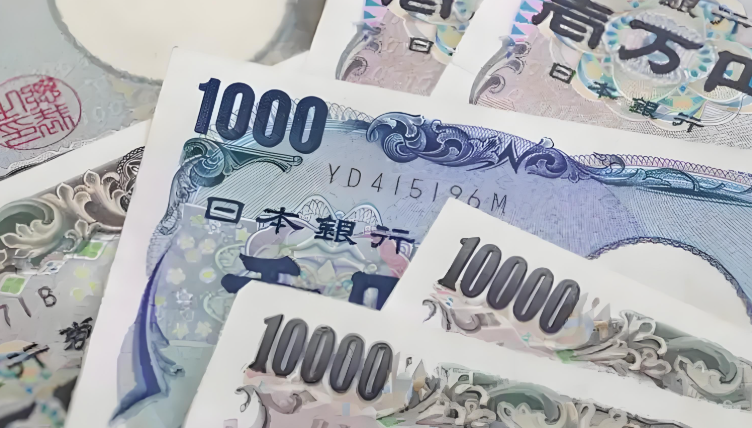The Truth Behind Yen Depreciation
Advertisements
The fluctuations of the Japanese yen have commanded significant attention in the financial markets over the past few quarters. In the second quarter of 2022, the yen's sharp depreciation made it a focal point in the forex market. Between March and June 2020, the yen depreciated by nearly 20% against the US dollar. Such a dramatic shift in a country's currency value within a single quarter undoubtedly sent ripples throughout the economy, providing ample opportunities for traders and regular investors to capitalize on the decline in the yen's value. This also turned Japanese assets—including real estate and consumer goods—into prime targets for foreign investors seeking lucrative opportunities.
At the heart of the yen's depreciation lies a deeper economic narrative, encapsulated in the phrase often echoed in financial circles: “The US stock market, China’s real estate market, and Japan’s bond market are the three toughest bubbles globally.” In this context, the bond market in Japan is often regarded as one of the most stable forms of investment, leading many traders to question why it is perceived as a "sturdy bubble" amidst the yen’s increasing volatility. The answers to these questions are rooted in a complex interplay of economic trends, demographic shifts, and high-stakes policy maneuvers.
Since Shinzo Abe took office in 2012, Japan's economy has undergone significant structural changes, primarily due to the implementation of “Abenomics.” This strategy combined monetary easing with fiscal stimulus to rejuvenate the stagnant Japanese economy. Nonetheless, long-term repercussions from these policies are starting to emerge. Japan faces a demographic crisis marked by an aging population—28.7% are aged 65 and older, according to the Ministry of Internal Affairs and Communications. This demographic shift brings structural pressures that threaten economic sustainability. As a response to these challenges, Abenomics directed substantial investments and loans into Southeast Asian markets, which at the time appeared promising. However, the onset of the COVID-19 pandemic drastically reduced global demand, resulting in economic stagnation in Southeast Asia, leaving Japanese investments increasingly unviable.
As these debts mounted, the yen's depreciation became a reluctant measure adopted by the Bank of Japan (BOJ) in an attempt to tackle the crisis. The BOJ has staunchly maintained a policy of ultra-low interest rates combined with large-scale bond purchases to stabilize the bond market. However, any shift away from the yield curve control (YCC) policy would lead to increased bond yields, which could substantially hike interest payments for both the government and corporations, exposing financial institutions to considerable risks. This delicate policy balance has had a profound impact on global forex markets, stirring volatility and speculation.
A key driving force behind the yen’s sharp devaluation is closely tied to the monetary conundrums faced by the Federal Reserve. Starting from March 2022, as the Fed accelerated its interest rate hikes, the yen failed to keep pace, leading to a significant opportunity for traders: borrowing yen at lower interest rates and reallocating that to higher-yielding US dollar investments. The enlarging interest rate differential fostered a clear depreciation trend for the yen.
Market participants reacted quickly to the Fed’s announcements, forming a general consensus that the BOJ was unlikely to change its stance on maintaining ultra-low interest rates. As traders began shorting the yen, they profited not only from the interest rate spreads but also from currency value fluctuations. In June during a BOJ meeting, the central bank reconfirmed its commitment to low rates and reiterated its stance on not abandoning the YCC, further validating market speculations. The expanding interest rate differential is likely to perpetuate the yen's depreciation, especially with the Fed's tightening monetary policy still in play.
Looking ahead, the trajectory of the yen will continue to be significantly influenced by Fed monetary policies. Several potential scenarios can help investors navigate this complex landscape:

Continued Fed Rate Hikes
If the Fed continues its path of increasing rates, it could surmount the dollar/yen exchange rate—propelling the depreciation of the yen further. Traders would likely capitalize on this to achieve notable profits through interest arbitrage.
Fed Rate Hikes Slow Down
Should the Fed ease its pace on hikes, a pullback in the dollar/yen may occur, but such retreats often do not alter the overarching trend. Any corrective phase could simply set the stage for renewed upward movement.
Fed Hits Pause on Rate Hikes
If the Fed chooses to halt its rate hike cycle in future meetings, we might witness the dollar/yen exchange consolidating at elevated levels. The market would then become increasingly sensitive to domestic economic shifts and policy changes within Japan itself.
Fed Rate Cuts
Alternatively, should the Fed opt to cut rates, we might see the dollar/yen exchange rate reversed. In such a scenario, the yen's resurgence may shift into the spotlight of market attention.
Quarter three may herald signs of a possible deceleration in Fed's tightening regime, with inflation gradually tapering yet remaining within a rate hike cycle. This could lead to a dollar/yen correction, yet it is plausible that the currency pair resumes its upward trajectory thereafter. Investors must maintain vigilance regarding the Fed’s policy movements to adapt their investment strategies accordingly.
The yen’s volatility presents significant investment opportunities within the forex realm. By accurately timing entries into trades capitalizing on the yen's depreciation, both traders and investors can benefit from the interest rate differentials and the corresponding fluctuations in currency value. However, with these opportunities come inherent risks. Therefore, it is prudent for investors, especially those engaging in forex transactions, to closely monitor global economic shifts, particularly the monetary policy directives from both the Fed and the BOJ, adjusting their strategies as necessary to optimize returns.